How to make homemade pasta
Despite the best efforts of low-carb fans, pasta remains more popular than ever. The dried stuff is a weeknight staple for many, but silky-smooth fresh pasta can be surprisingly easy to make too. Give it a go with our everything-you-need-to-know guide.
What is pasta?
At its simplest, pasta is just flour and water. We generally associate it with Italy but most countries have their own version of something recognisably similar: German späetzle, Greek orzo, Moroccan couscous, and a huge variety of noodles across Asia.
Stuffed pasta is global too: think Turkish manti or Japanese gyoza as well as ravioli and tortellini.
Food historians think that the idea probably spread to Europe from Asia but not, as many people will try to tell you, via Marco Polo. Forms of pasta already existed in Europe at least a century before the time of his voyage to China in 1271.
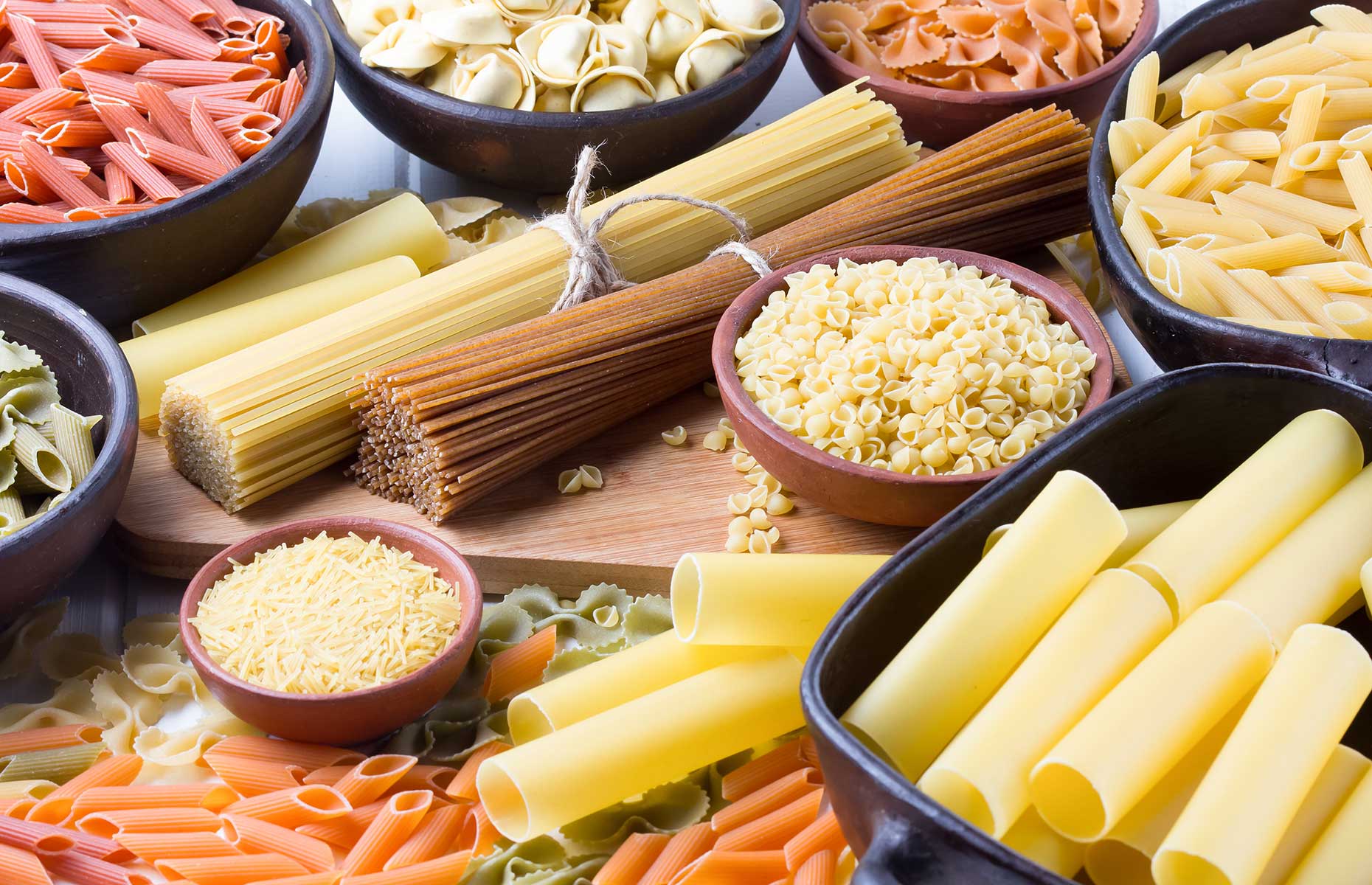 Larisa Blinova/Shutterstock
Larisa Blinova/Shutterstock
In terms of Italian pasta, dried shapes tend to have no further ingredients beyond flour and water. They are generally cooked so a tiny core remains hard to give that all important al dente finish.
Fresh pasta on the other hand is usually made with eggs and is smooth and supple in the mouth. It can be served with a sauce or stuffed and there's really no comparison with supermarket "fresh" pasta. Try making your own and we promise you'll never go back.
Will I have to buy a lot of kit to make homemade pasta?
You can make fresh pasta with nothing more than a rolling pin so please don’t let a lack of fancy kitchen gadgets put you off having a go. In fact, you don’t even need a rolling pin – a bottle of wine will do! Having said that, rolling by hand can be quite the upper body workout.
READ MORE: 50 amazing kitchen hacks that will change the way you cook
A machine definitely makes it easier. You don’t need to spend a fortune: about £50 will get you a decent one that should last a lifetime if treated right. We like the reliable Italian Imperia machines or the slightly slicker, more expensive counterparts by Mercato which are even available in a variety of colours. The important thing to remember is not to get your machine wet: don't wash it, just brush off any bits of flour before you put it away.
If you’re lucky enough to have a KitchenAid or Kenwood stand mixer, pasta rolling attachments are available which will save you the bother of handcranking.
As far as other bits of kit go, a pasta wheel is very pleasing to use and nice for giving fluted edges, but by no means essential. Biscuit cutters are useful if you want to make round ravioli or tortellini although an upturned wineglass will work at a push and square ones cut with a knife taste just as good.
What not to buy
Don’t bother with ravioli stamps. They work less well than biscuit cutters and create more waste. Ditto the dimpled trays with their miniature rolling pins.
What ingredients do I need to make fresh pasta?
First and foremost is flour. You might have heard people talk about using Italian 00 flour for pasta but what does that mean? In Italy flour is categorised by how finely it is milled with 2 the coarsest and 00 the finest. So any 00 flour will be very fine and powdery, but the gluten content will vary depending on what wheat was used. Traditionally flour from grana duro ("hard wheat", often a variety called durum) is used for pasta which has a gluten content slightly below bread flour but higher than the grana tenero ("tender wheat") cake flours. It makes particularly silky pasta.
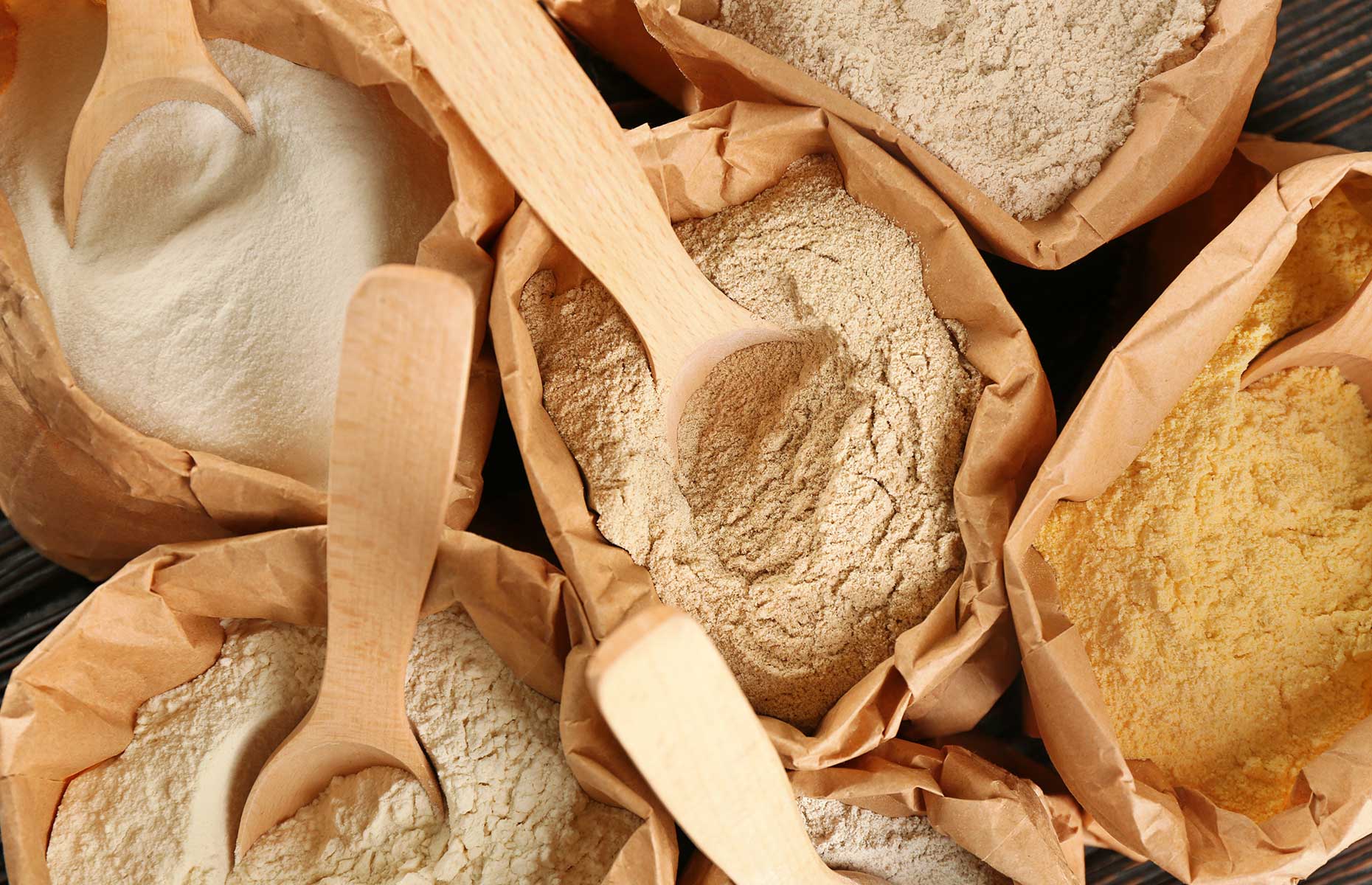 Africa Studio/Shutterstock
Africa Studio/Shutterstock
However, it really doesn’t do to get hung up on sourcing the precise kind of authentic Italian 00 durum wheat flour. Bog-standard plain flour will work nearly as well. Please just use whatever you have in your cupboard or can get easily from the shop and make yourself some delicious pasta.
READ MORE: about different types of flour here
You can use half wholemeal if you want a rustic feel (a 100% wholemeal pasta will be very, very difficult to knead and not terribly flexible). Spelt flour makes a nice soft dough that is easy to knead and roll by hand so is a good place to start if you don’t have a machine. Adding a percentage of semolina flour to your dough, as in this recipe, makes the pasta slightly coarser which helps sauce cling.
Adding liquid to flour allows gluten to develop – the network of proteins that gives pasta it’s elasticity and bite. You could use water but generally when we’re talking about fresh pasta we mean egg pasta. A basic ratio of 1 egg to 100g flour makes lovely pasta and is easy to remember. Those quantities will make one generous portion so scale up accordingly, depending on how many people you want to feed.
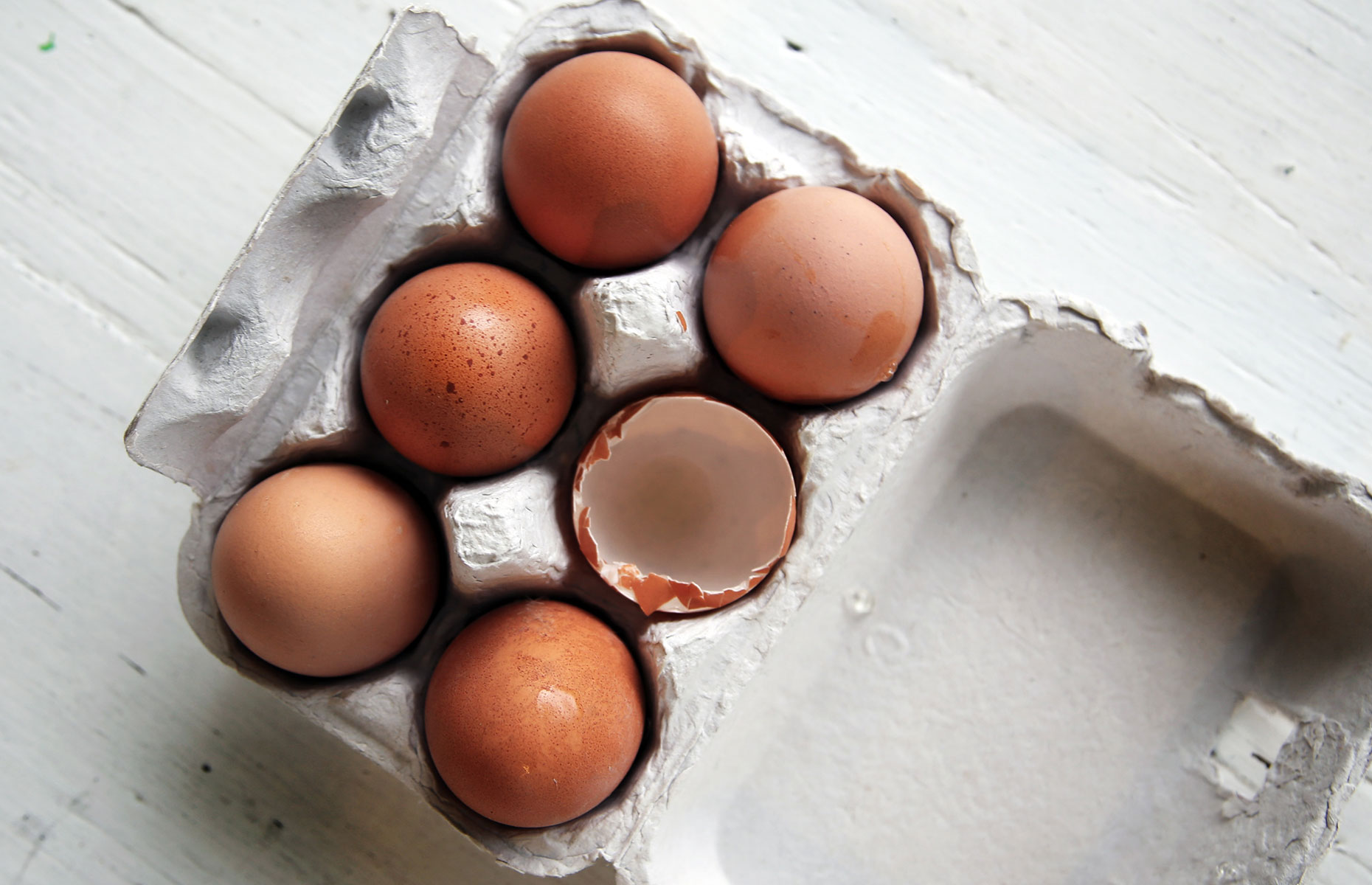 Caroline Attwood/Unsplash
Caroline Attwood/Unsplash
Egg white is 90% water but yolks have more protein and fat which inhibit gluten from building strong networks. Substituting whole eggs for an equivalent weight of yolks leads to richer, “snappier” pasta that is lovely for tagliatelle, but lacks the flexibility for making stuffed shapes. Once you're happy with the method, it’s worth experimenting to find your perfect ratio.
Adding a tablespoon of oil to your dough can help make it easier to knead. Some recipes suggest adding salt but you risk crystallisation and dry patches. Salting the water when you cook your pasta is a more reliable way of controlling the seasoning.
How do I make pasta?
Step one: make the dough
So you’ve gathered your flour and your eggs. To turn them into pasta, all you need is a little muscle. Make a pile of flour on the kitchen counter and create a deep well in the centre. Crack in the eggs and use a fork or your fingertips to break them up.
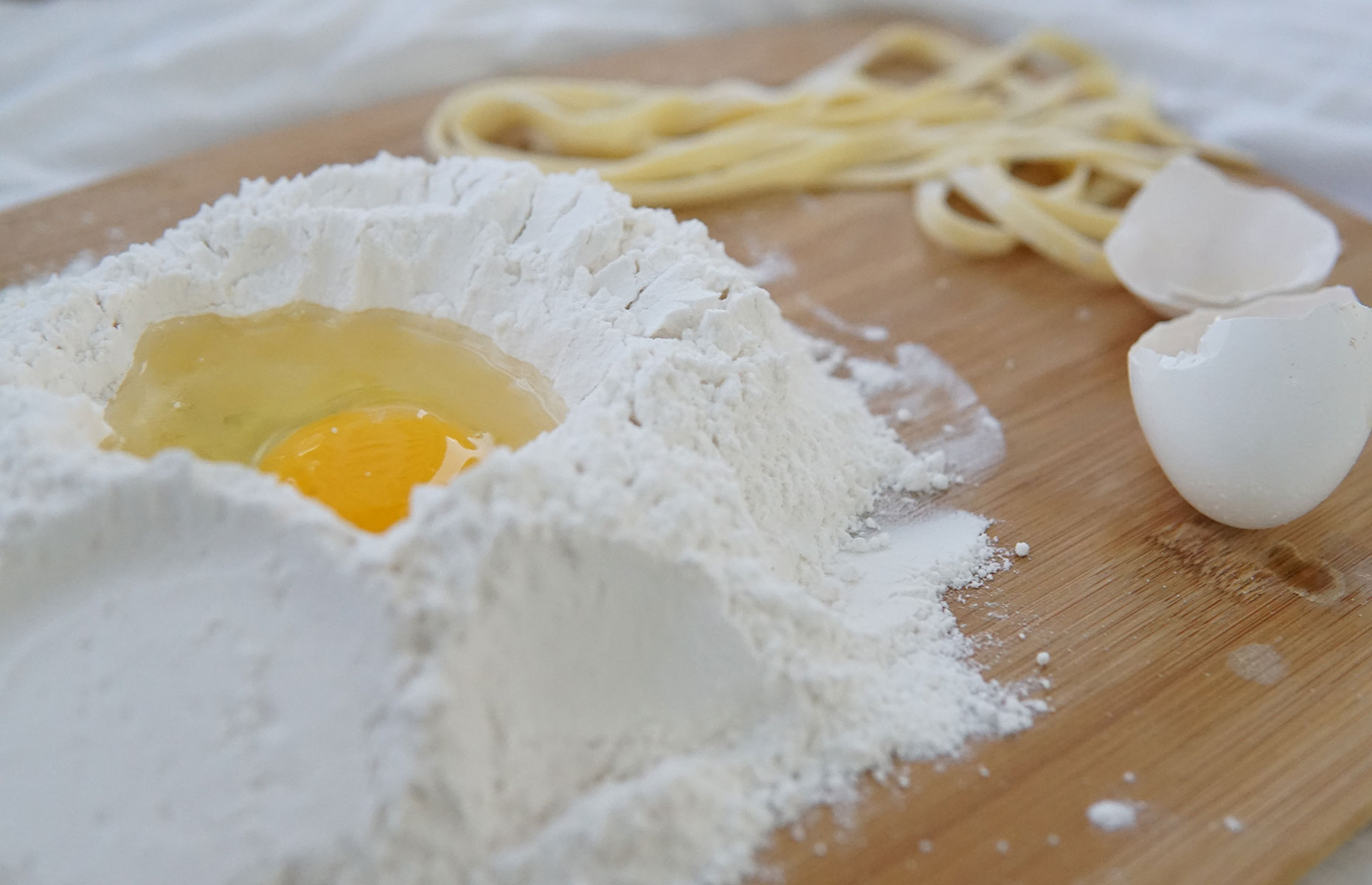 Elle Hughes/Unsplash
Elle Hughes/Unsplash
Step two: knead
Gradually incorporate the flour into the egg mixture until it becomes a single mass then form into a ball and knead on the worktop. (If you have a food processor you can just pulse flour and eggs until they resemble bredcrumbs before tipping onto a work surface, bringing together and kneading.) You’ll need to knead for about ten minutes and as you do you should feel your pasta dough becoming smoother and more elastic under your hands. If you have a food processor with a dough hook you can use that instead but give the dough a feel every now and again so you get to understand how it changes.
Step three: rest
After about ten minutes you should have a smooth ball of dough that springs back if you poke it with a fingertip. Wrap it in clingfilm and pop it in the fridge for half an hour or so. This is important. The gluten needs time to rest. If you try and roll it now it will be very hard work as the pasta will keep springing back and tearing.
Top tip: If you're making your dough in advance, it will keep in the fridge for about three days before it starts to go a little grey. If this happens, it will still taste fine but doesn't look very nice.
Step four: rolling
When it’s time to roll, cut a lump of dough about as big as your fist and flatten it out a little. Keep the remaining dough covered. Dust with just enough flour to stop it sticking and roll with a pin, regularly doing a quarter turn to ensure it comes out even. Keep going until the dough is thin enough to be slightly translucent. Italians say you should be able to read the newspaper through it but as long as you can see the colour of your skin you should be fine.
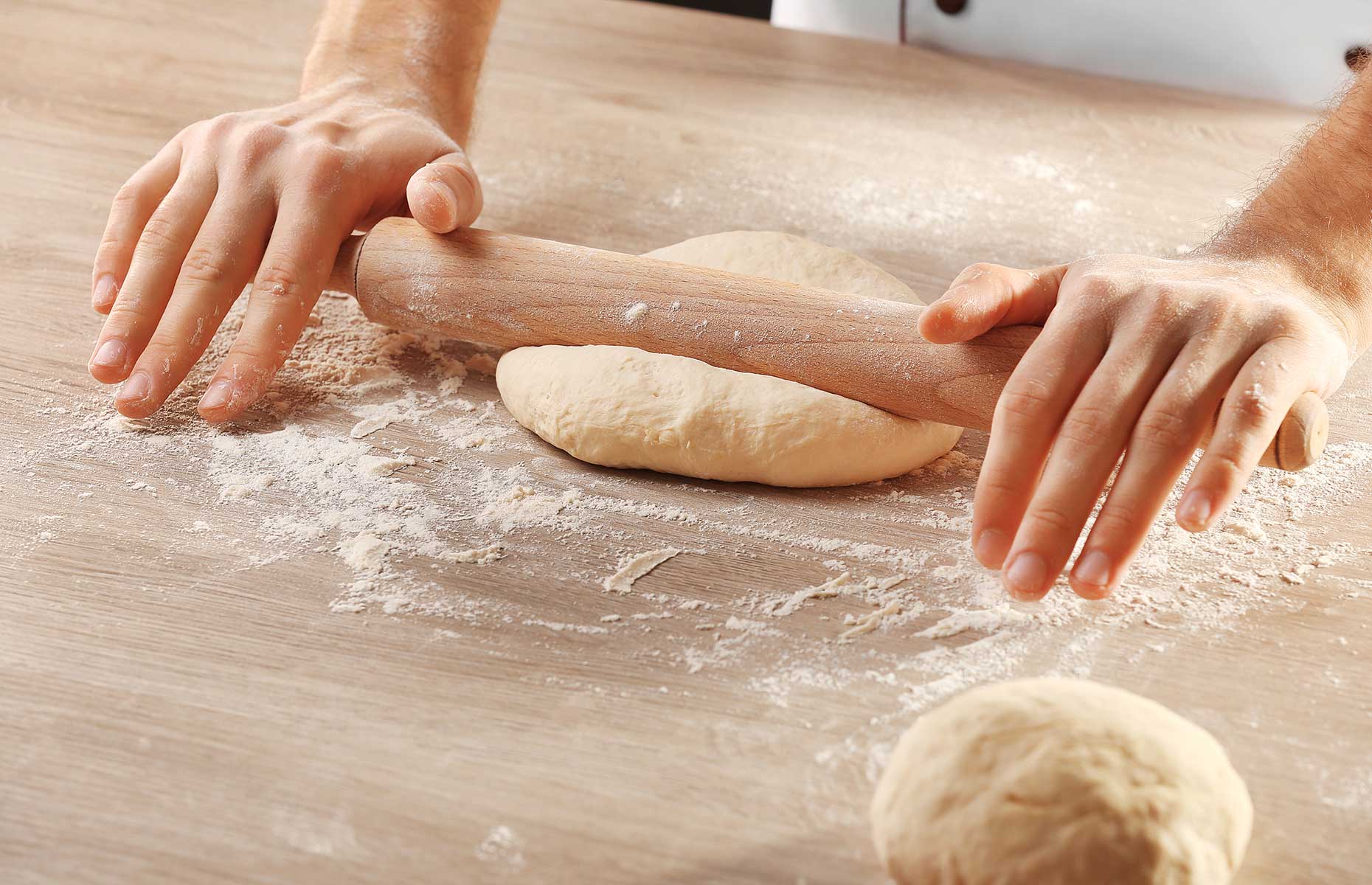 Africa Studio/Shutterstock
Africa Studio/Shutterstock
If you’re using a machine, dust it lightly with flour and put your flattened piece of dough through on the widest setting. Support the sheet of dough with the flat of your hands as it comes out of the machine so it doesn’t tear or fold over on itself.
Once you have a sheet, fold it in thirds, like a letter about to be put in an envelope, and pass it through again. Do this several times as it helps create an evenly textured dough with neat corners. After several passes through the widest setting, turn the dial to bring the rollers closer together and pass your dough through the next setting.
You only need to do this once unless it tears in which case don’t panic. Pasta is very forgiving. Just fold it in half, go back to the previous setting and roll it through again. Different machines have different numbers of settings but generally the penultimate one will be good for noodles and the thinnest is better if you’re making stuffed pasta. Lay your sheet of pasta out on a floured worktop, return the machine to its widest setting and repeat the process with any remaining dough.
Step five: drying
Drying racks that look like tiny towel rails are also available for hanging up your noodles but aren't necessary. Some people use the backs of chairs or coat hangers as alternatives or you can just leave the pasta on the worksurface, dusted with flour.
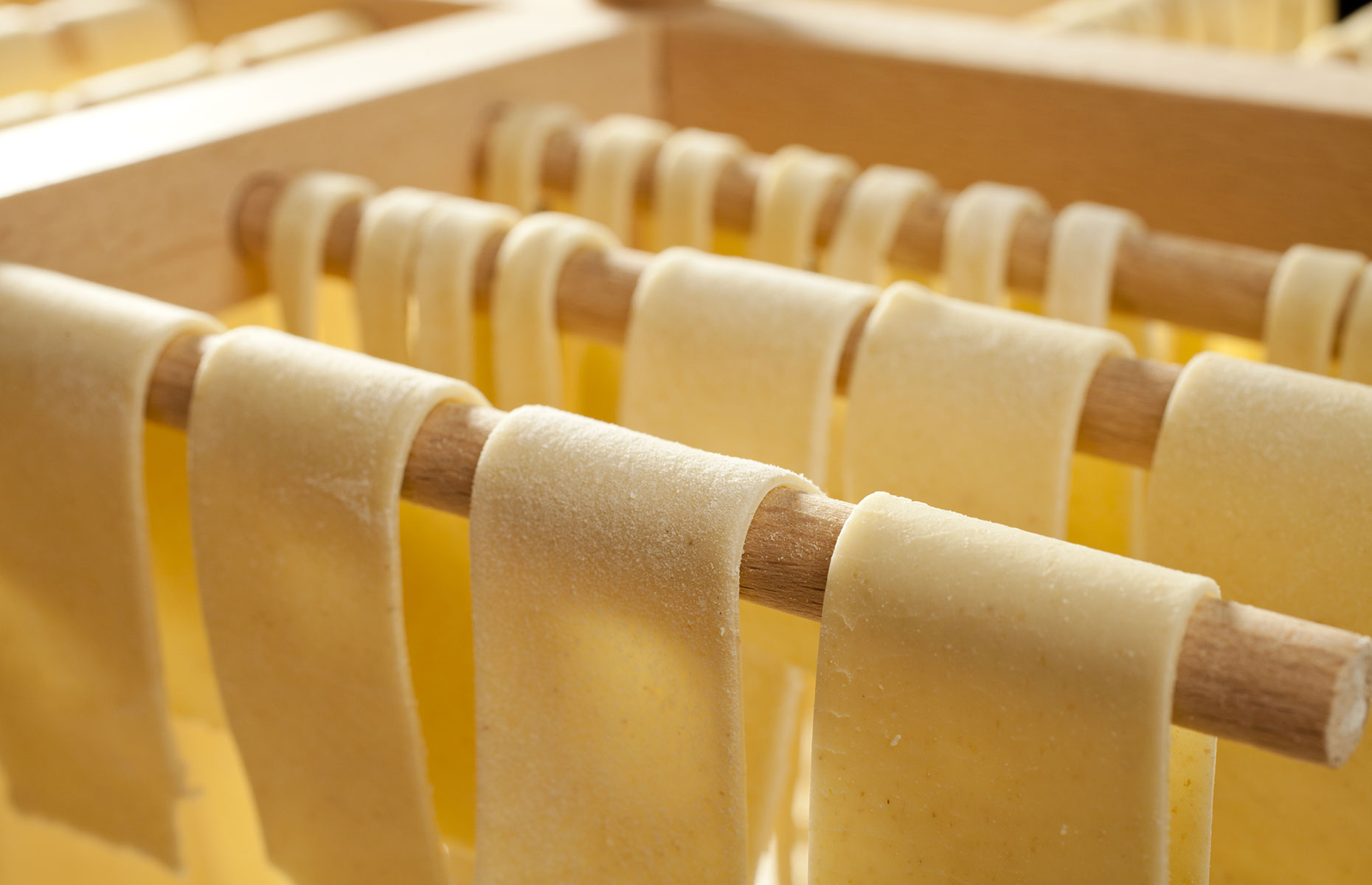 Brian Yarvin/Shutterstock
Brian Yarvin/Shutterstock
It shouldn't get rock hard but you want it to lose any surface tackiness so you can coil it up for storage without fear of sticking or clumping.
How to make noodles?
Most pasta makers will come with a cutting attachment, usually with two settings. One for tagliatelle and another for linguine. Once your dough is in sheets, you can cut them to your desired length and feed these through the cutting attachment. Dust the resulting noodles with flour so they don’t stick and curl them into little nests. If you don't have a cutting attachment or want wider noodles, you can cut them with a sharp knife.
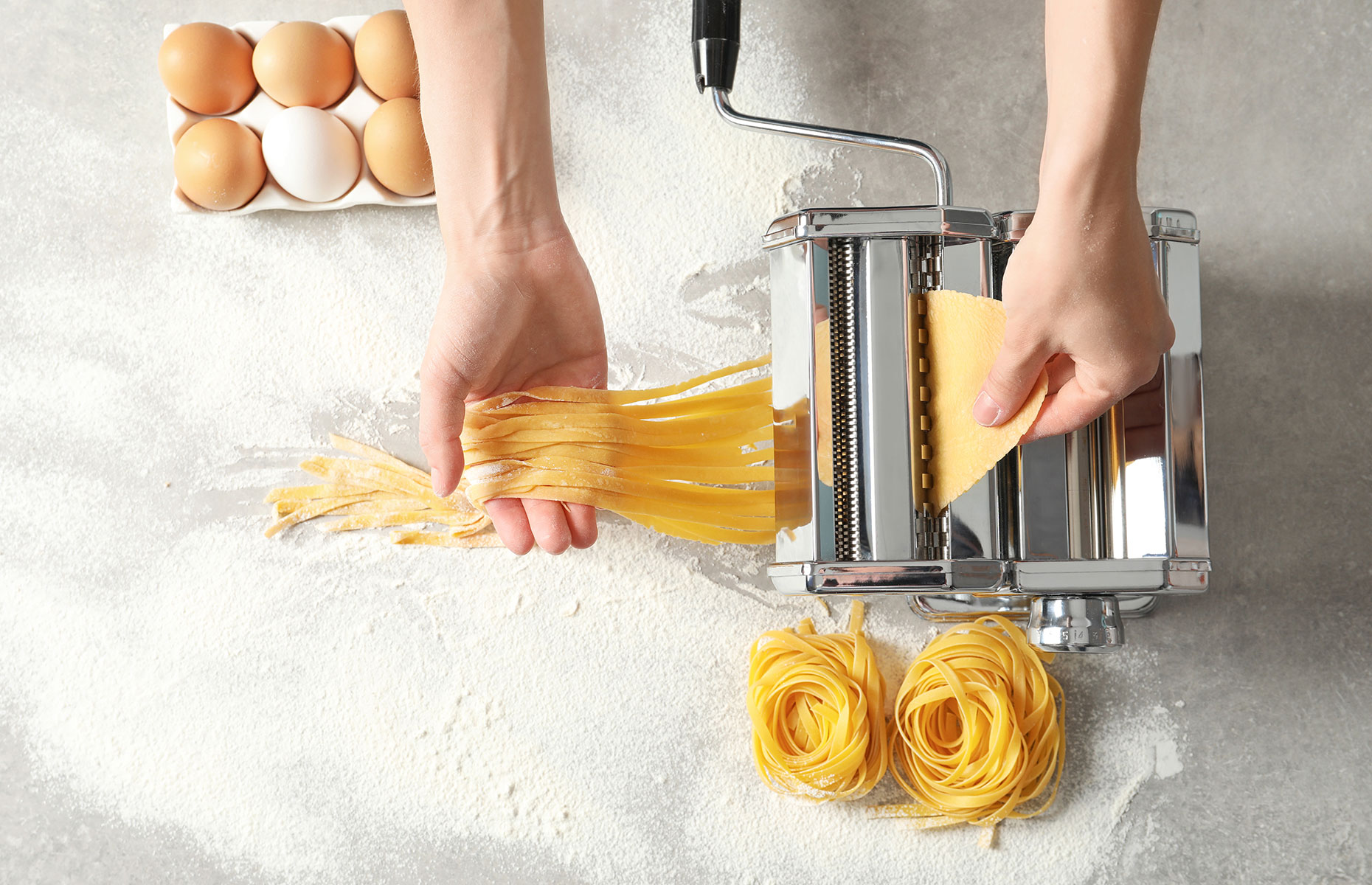 New Africa/Shutterstock
New Africa/Shutterstock
What about stuffed pasta?
The easiest filling for stuffed pasta is simply seasoned ricotta cheese. Add some salt and plenty of black pepper, maybe some finely grated parmesan or lemon zest, and mix well. Ricotta and (cooked, drained) spinach is a classic. Cooked and pureéd butternut squash or pumpkin is delicious, with or without the addition or goats or blue cheese. Try using a simple pesto, your favourite meat ragu, crushed peas with a little mint or fresh crabmeat mixed with some finely chopped chilli and parsely. The possibilities are endless.
The easiest stuffed pasta to make is a mezzeluna or "half moon". Cut circles with a biscuit cutter or wine glass and put a teaspoon of your chosen filling in the centre. Wet your fingertip and dampen the edge of the circle. Fold it in half to create a semi circle with the filling at its centre. Make sure there is no air trapped and press the edges together to seal.
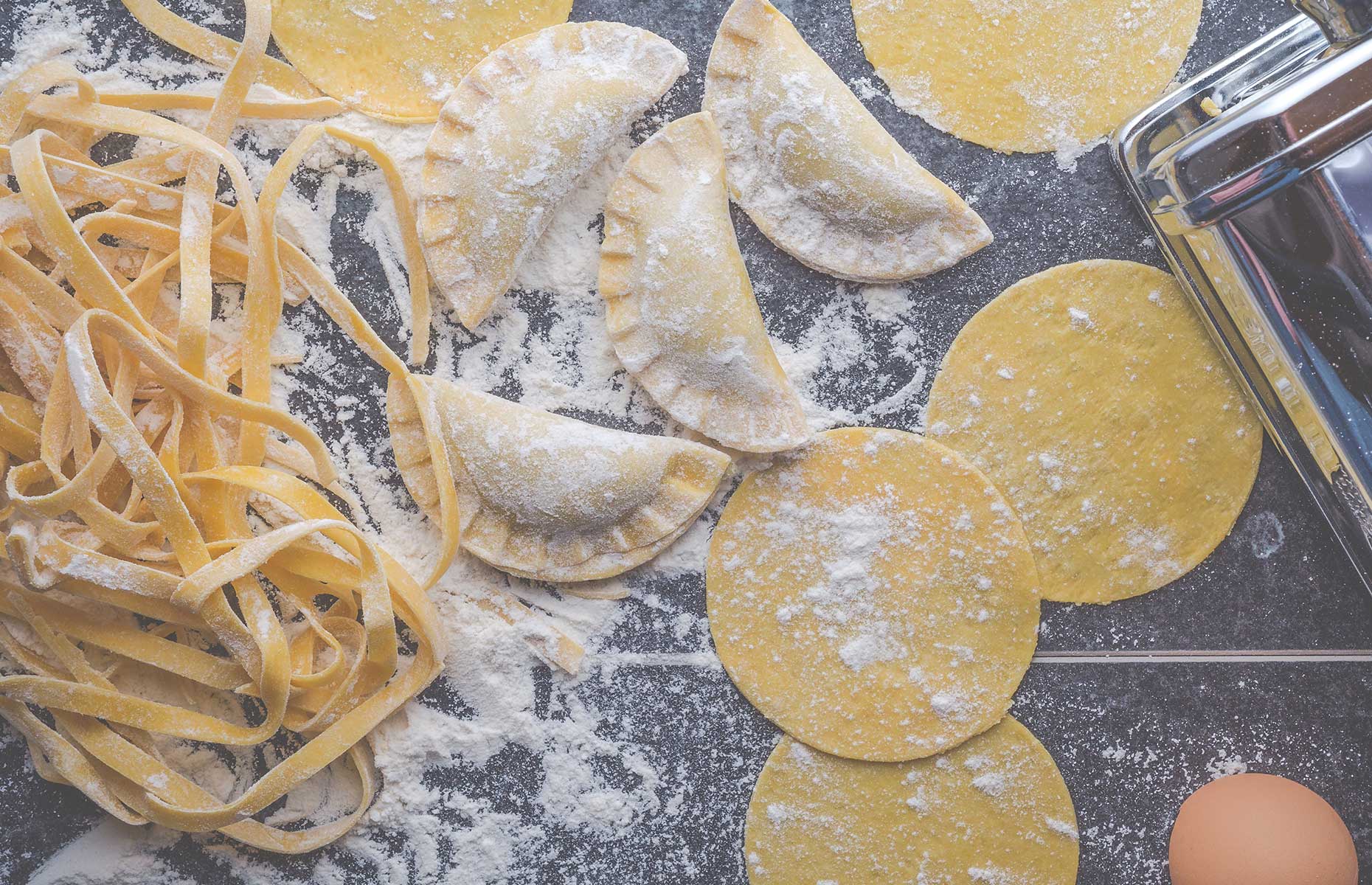 Floki/Shutterstock
Floki/Shutterstock
Ravioli is not much harder but you'll need two circles (or squares) instead of one, sandwiching some filling between them and pressing the edges together to make sure the parcels are sealed. Tortellini are a little harder. Make a mezzeluna as above then bring the corners together, overlap them slightly and pinch to make a little bonnet shape. Whichever parcels you choose to make, the key thing is not to use too much filling and to make sure you have enough or a border around it to create a proper seal.
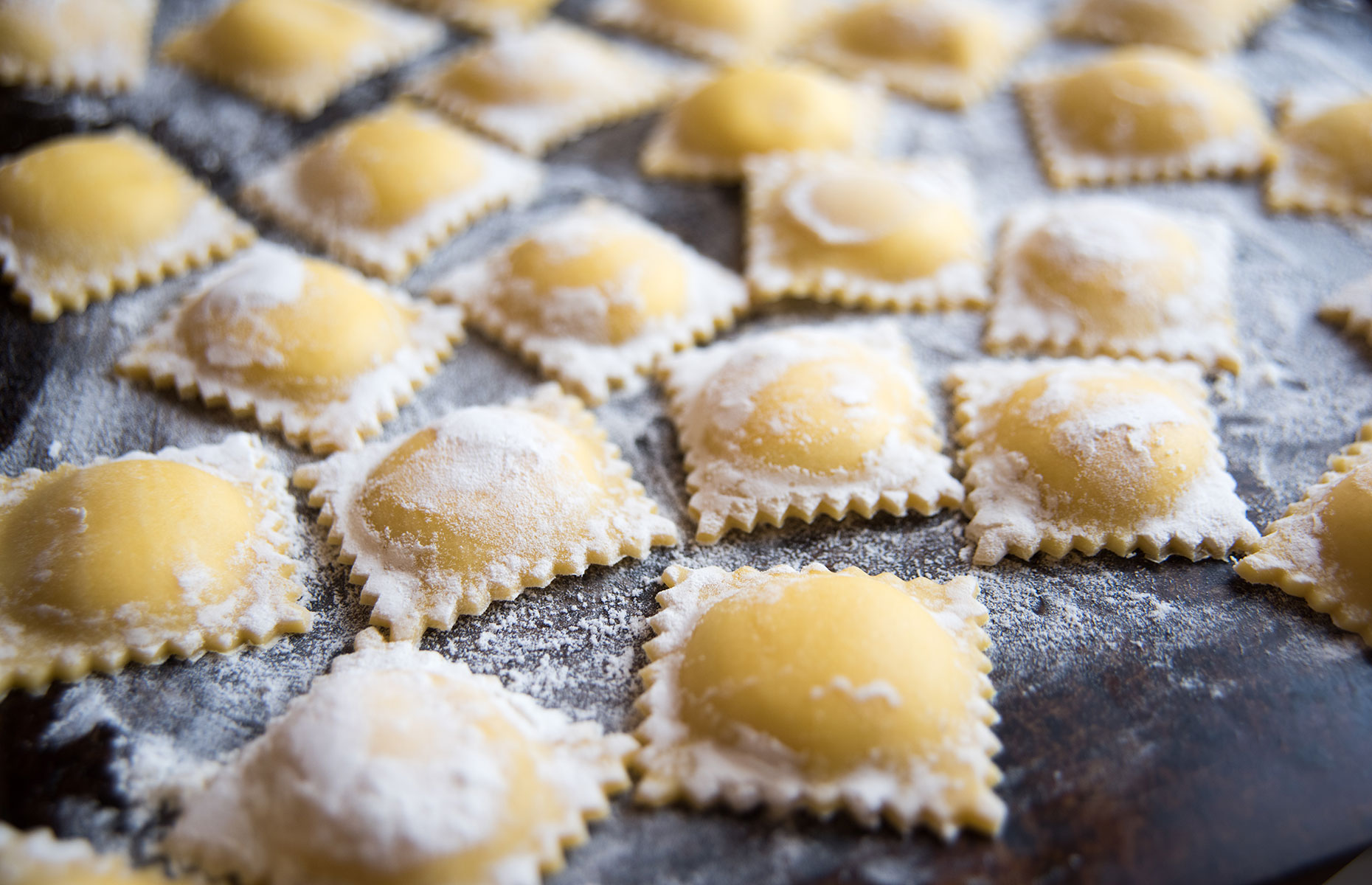 Anna Hoychuk/Shutterstock
Anna Hoychuk/Shutterstock
For more ideas for pasta fillings, have a look at some of these recipes:
Mozzarella, tomato and olive ravioli
How should I cook my fresh pasta and what sauce should I serve with it?
Bring a pan of salted water to the boil and drop you pasta in. Give it about three minutes for noodles and four for stuffed pasta. Drain and toss with your sauce. We like a simple butter sauce to allow stuffed pasta to shine. Melt a generous amount of butter in a large frying pan and add a pinch of salt, a generous grinding of black pepper, some grated lemon zest, a squeeze of lemon juice and some chopped herbs. Toss the drained pasta in the butter until well coated then transfer to plates and serve immediately with plenty of parmesan.
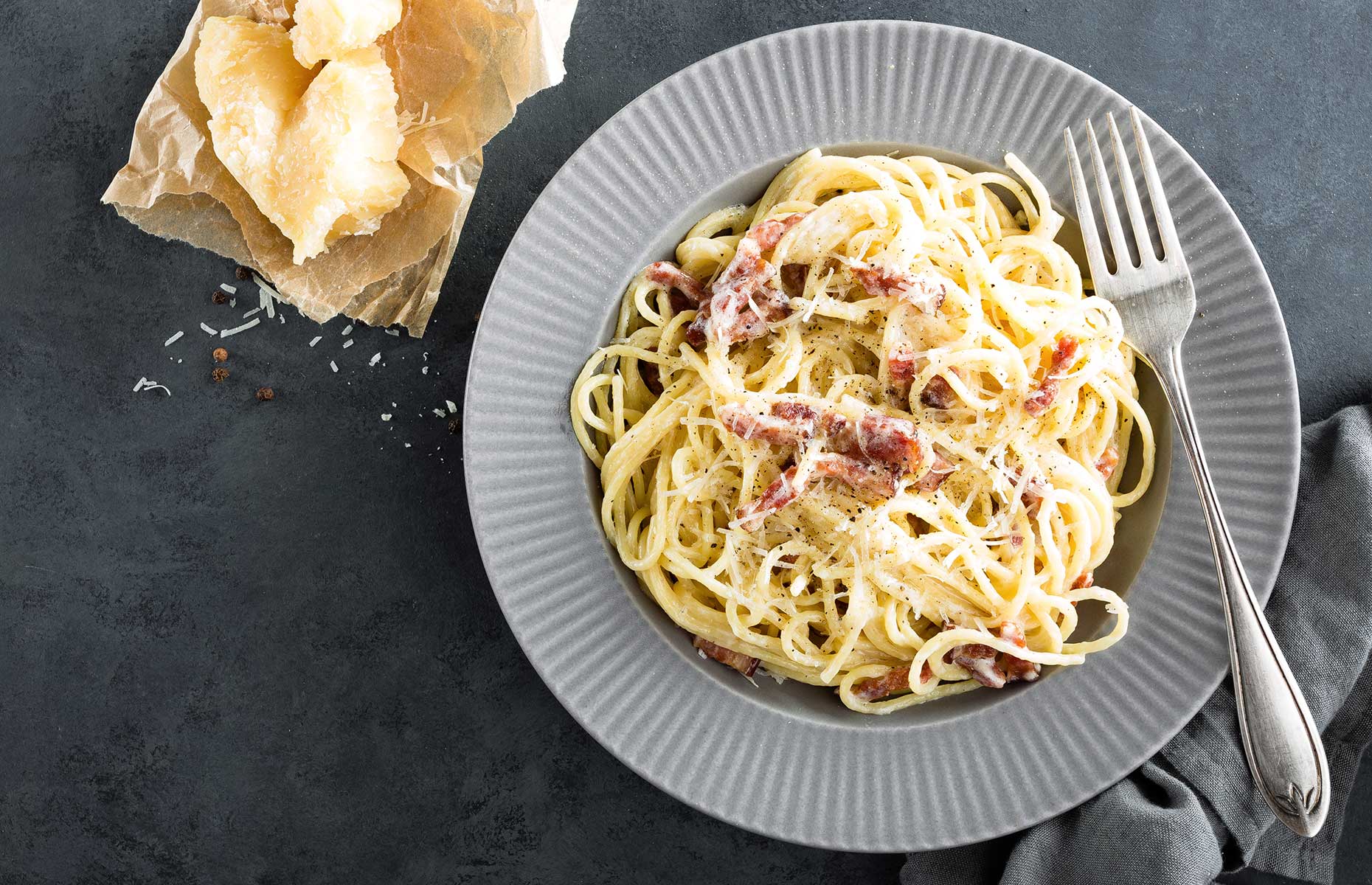 Sea Wave/Shutterstock
Sea Wave/Shutterstock
For other sauce ideas to complement your silky fresh pasts, have a look at these recipes:
Does fresh pasta freeze?
Pasta freezes incredibly well. Toss it with plenty of flour to avoid sticking and store in an airtight container. It will stay good for up to three months in the freezer and the best bit is it cooks straight from frozen. Just add a minute to the cooking time.
Vegan and gluten free
Vegan pasta
You can make simple fresh vegan pasta just with flour and water, using about 60ml of water for every 100g of flour. However, you’ll get much better results making substitutions that replace some of the fats and proteins of the egg. Try using aquafaba, the liquid from a can of chickpeas, about 50ml and a teaspoon of olive oil for every 100g of flour.
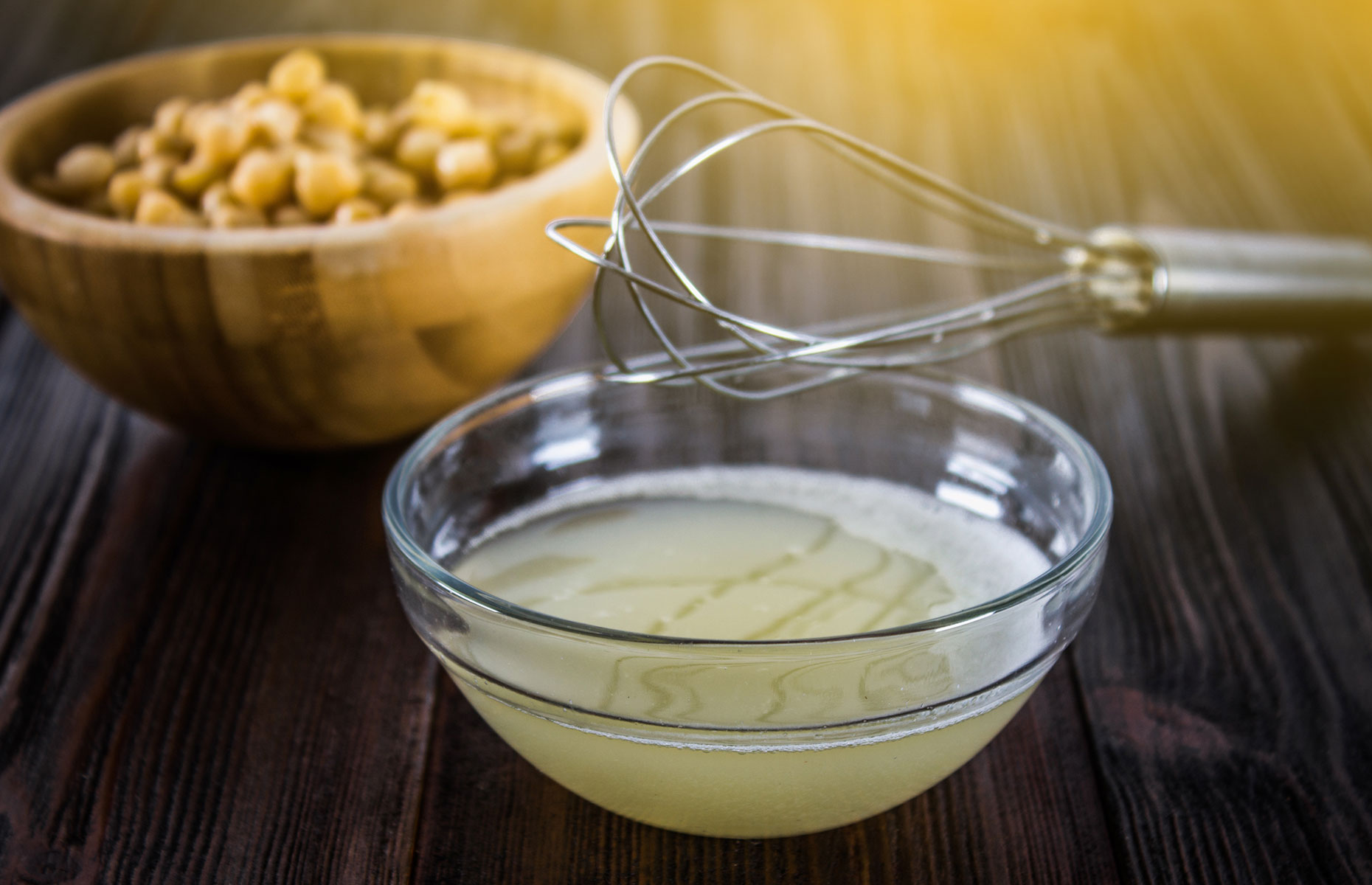 Olya Detry/Shutterstock
Olya Detry/Shutterstock
Gluten free pasta
This is a little harder since gluten is what gives fresh pasta its texture but it can be done. Use regular gluten free flour (most are a blend of rice and maize flours with potato starch) and eggs as above, but add 1tsp of xanthan for each 100g of flour. This helps make the dough more flexible. You won’t need to knead for as long as regular pasta dough as there’s no gluten to be developed so you can stop as soon as you have an even textured dough. No need to rest either, so you can get straight to rolling.
How to up your game
Once you've mastered basic dough and experimented with egg-to-yolk ratios and tried verious different flours, there are all kinds of exciting things you can do to your pasta. To make coloured pasta try replacing half the egg with an equivalent weight of cooked and pureéd vegetables. Beetroot gives vivid pink dough, use spinach or herbs for green or tomato paste for red. Make two batches of different colours, turn one into tagliatelle and lay them in stripes or swirly patterns over a sheet of the other. Run this through the machine to give you striped dough for incredibly impressive ravioli.
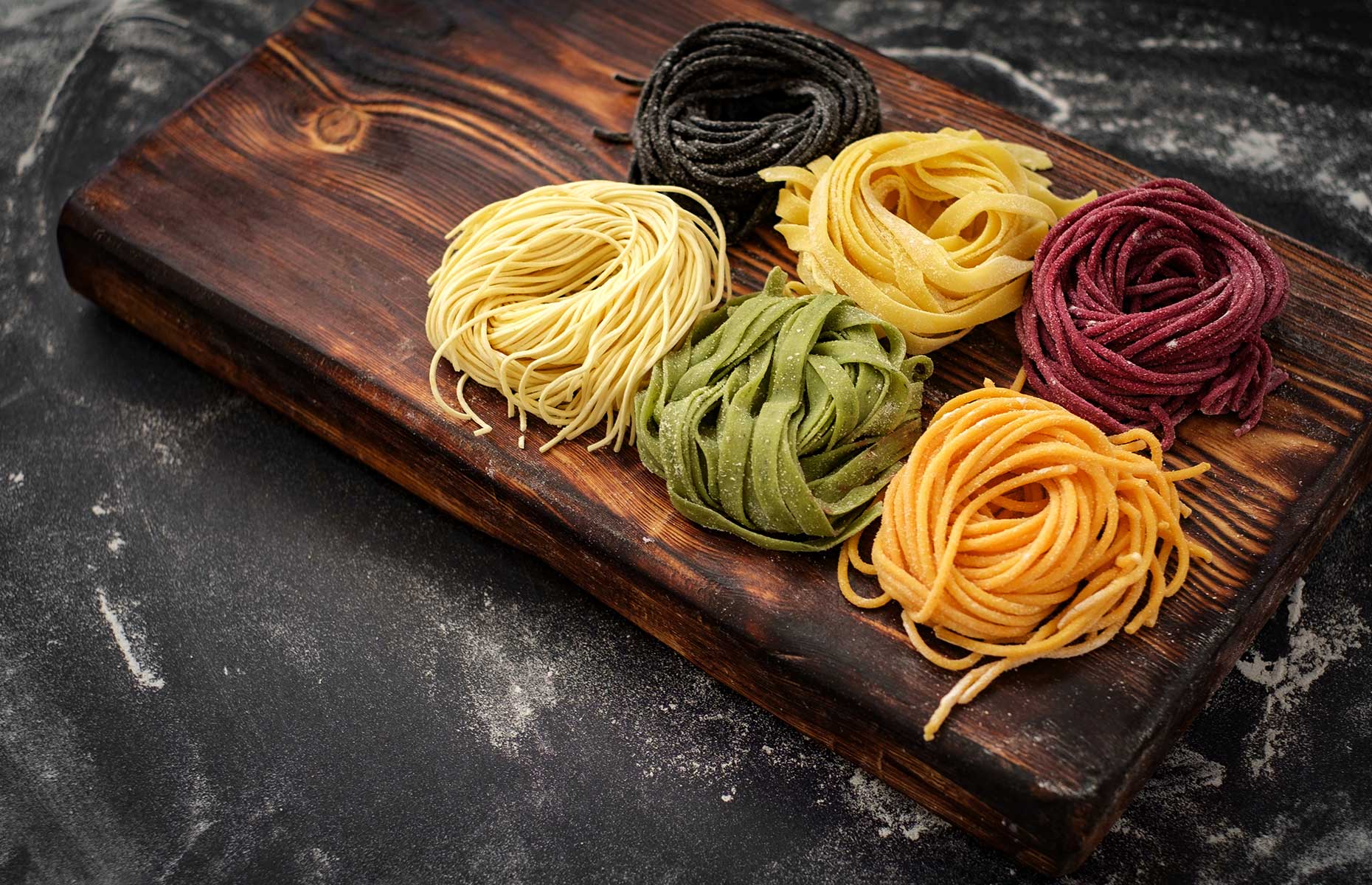 Andrei Iakhniuk/Shutterstock
Andrei Iakhniuk/Shutterstock
Or scatter soft herb leaves and edible flowers over half a sheet of plain dough. Fold the other half on top and roll for a beautful "stained glass" effect.
Ravioli al uovo makes a showstopping dinner party starter. Each oversized raviolo contains a whole golden egg yolk that spills out when cut. Try this recipe to impress friends, family and yourself.
You can even make sweet pasta! Sub out a tablespoon of flour in the dough for icing sugar and make a filling of sweetened cream cheese, fruit pureé or chocolate ganache. Once you start experimenting, there is a whole world of fresh pasta adventures to enjoy.
Lead image: Jiri Hera
Comments
Be the first to comment
Do you want to comment on this article? You need to be signed in for this feature
